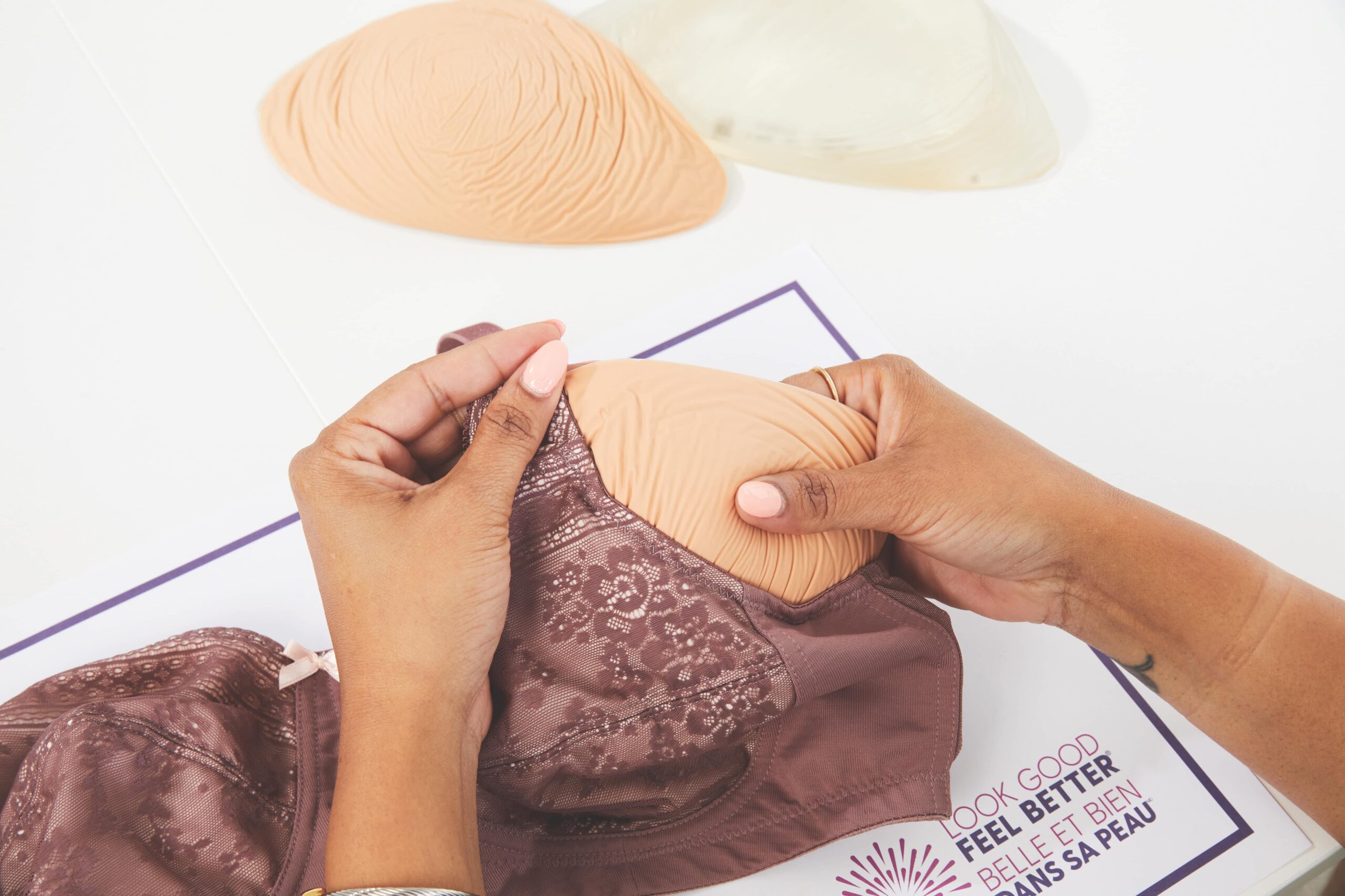All About Breast Forms

Breast forms and other specialized garments are worn during different stages of healing and beyond, offering comfort and support as your body recovers. This guide explains the options available, when to use them, and how to prepare for a proper fitting that meets your personal needs.

When to use Breast Forms
There is nothing wrong with wanting to feel like yourself. If you’ve been medically cleared to wear breast forms, then you should wear one whenever you choose to.
Some women use breast forms while waiting for reconstruction
Wearing a breast form may help minimize shoulder droop for some people
They can be worn all the time, just on certain days or during certain activities
Others opt not to have reconstructive surgery and use forms as a long-term option
Lots of other people choose to not wear one at all and “live flat”
Types of Breast Forms
Should you choose to wear a breast form, there are lots of different options out there. They vary in weight, material, size and shape. Take the time to explore your options and find the best one for you. Some are even made specially for exercising and swimming.
Custom made breast forms are also available if you aren’t able to find a shape that works for you.
Breast form varieties include:
Various weights that can be very lightweight or match natural breast weight
Some companies offer forms in different shades to better match skin tones
Partial forms available for lumpectomy
Symmetrical or Asymmetrical to match your natural shape
Special forms for swimming or sports
Different materials including silicone, gel, fiber fill, foam
After Surgery
During the 6-week healing period, you won’t want to add weight or compression to the area. Initial breast forms, which are made of a lightweight, loose fibre, are a good option. Some women like the lightweight fibre of an initial breast form and choose this option as their standard breast form after the recovery period has passed.
Others prefer the weight of a standard breast form as it can feel more what they are used to.
Some women refer to the “hug test” – or what makes them feel most comfortable when hugging another person. Knowing what will work for you will depend on your needs and what makes you comfortable.
Partial Forms
Partial forms or protheses are used after a lumpectomy or lymph node removal. They can also be used several years after a reconstruction to match changes in your other breast due to changes in weight and natural changes over time.
They help balance shape and create symmetry. There are lots of options for every shape and size to match the other breast.
Preparing for a Breast Form Fitting
- Most fittings are more than an hour – call and book an appointment
- Schedule 6+ weeks after surgery
- Ensure you don’t have any swelling to find a proper fit
- Wait until there’s no drainage at site
- You should be completely healed: no wounds or bandages
- Bring a fitted t-shirt to test how your bra looks underneath it
Nervous about going into a retail breast form shop?
Call ahead and ask some of these questions:
Do they carry a full range of products?
Will they explain the differences in products to you?
Do they offer private fitting rooms?
How busy will they be at the time of your appointment?
Is the retailer knowledgeable of various surgery types and treatments?
Let’s navigate this together
Join a community that understands. Receive expert advice, useful resources, and compassionate tips throughout your cancer journey in the LGFB newsletter